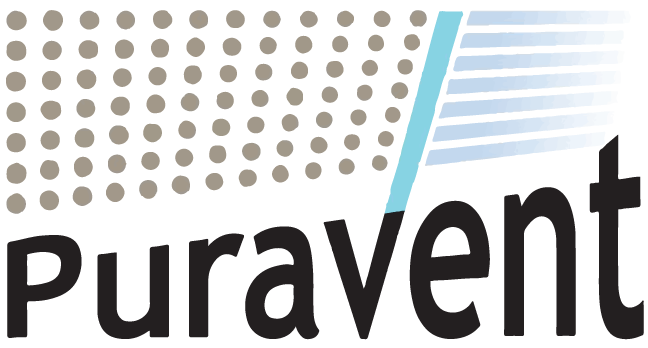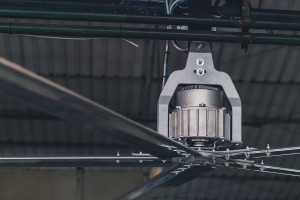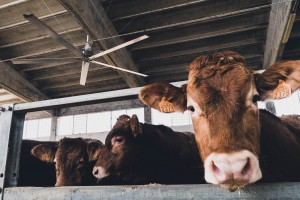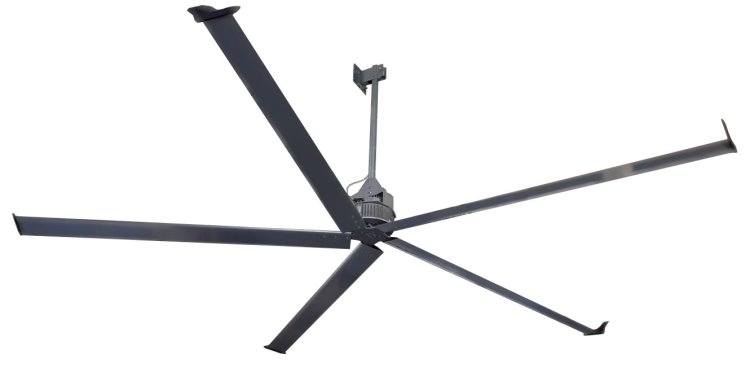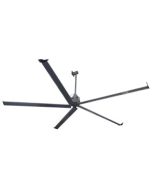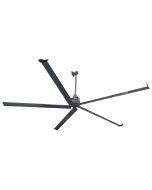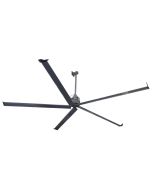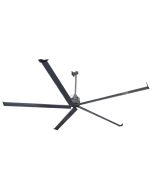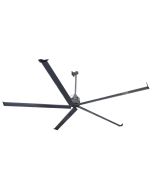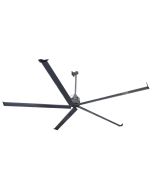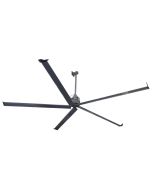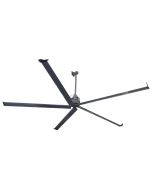HVLS Destratification Fans - A Guide
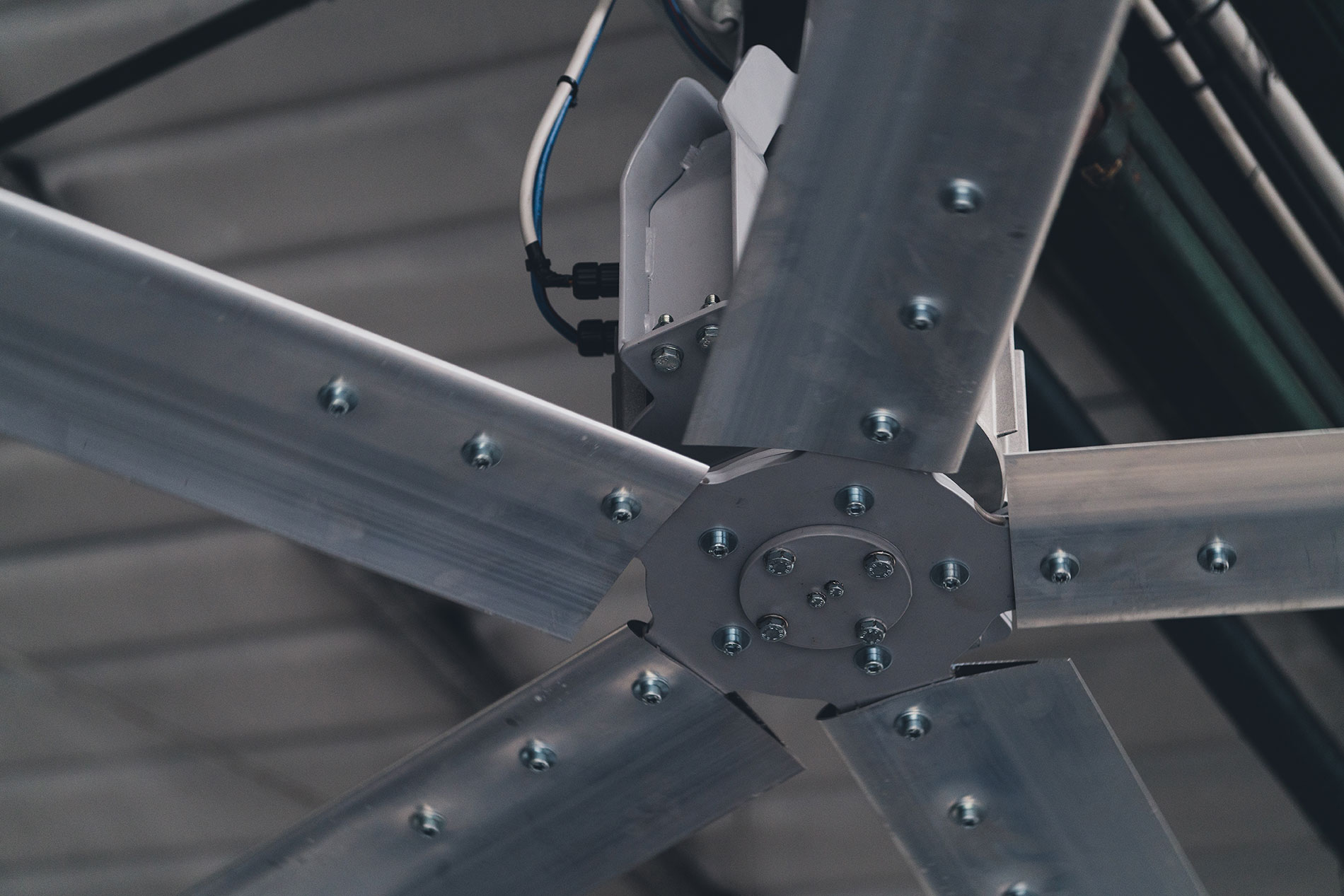
High Volume Low Speed destratification fans (better known as HVLS destratification fans) are able to provide great improvements in working environments, customer environments and livestock housings, and better operating conditions for many types of machinery. Due to their whisper-quiet operation (<60dBa) the Evel HVLS destratification fans are applicable across a wide range of environments including for example - restaurants, hotel lobbies, large open plan office places, atriums, conferance centres, warehouses, manufacturing environments and livestock buildings.
Stratification of air is due to the fact that hot air rises, leading to the temperature at ceiling level being higher than at ground level. It is generally accepted that in rooms with stratified air, the temperature differential is typically 2-3°C per 5m height but can be as much as 1°C/m height in some circumstances. In the worst case, this means that in a 10m high room the difference between temperature at floor level and ceiling level would be 10°C. To achieve a comfortable working environment of say 18°C therefore entails heating the ceiling to 28°C in this circumstance and the higher the ceiling the greater the potential temperature differential, and the greater the likely savings from implementing effective thermal destratification fans.
How do HVLS destratification fans work?
HVLS destratification fans take in the warmer ceiling air and transport it to the floor in a slow-moving column to create a better working environment and greatly reduce total energy consumption. In winter the most significant benefit is a considerable reduction in the cost of heating to create the optimum working/storage environment. During summer months HVLS destratification fans provide low-cost ventilation, reducing or eliminating the need for air conditioning.
When are HVLS destratification fans used?
These fans come into their own in larger applications where there is an economic advantage to using HVLS fans rather than typically up to 7 smaller conventional destratification fans. The increased cost per fan of HVLS fans will be offset by lower installation costs (particularly power and control cabling), lower ongoing operating costs (due to far more efficient motors and responsive control systems) and lower future maintenance costs (due to lower speed and automated, variable speed operation).
Where are HVLS destratification fans used?
In retail or manufacturing situations it is necessary to maintain a comfortable environment to maximise customer enjoyment and / or employee productivity. In high-tech environments a stable controlled environment is required for efficient operation of electronic equipment.
In warehousing it is often necessary to maintain certain air quality standards including temperature and humidity in order to maintain the quality of the stored materials. Similar requirements apply to indoor sports arenas. HVLS destratification fans are ideal for such applications as they are able to respond rapidly to changing environmental conditions.
Enclosed or semi enclosed livestock buildings such as poultry sheds, livestock wintering buildings and cow milking parlours will enjoy the benefits of energy savings and enhanced productivity and improved animal welfare when HVLS destratification fans are put in place.
'Evel' range of HVLS destratification fans
All Evel HVLS destratification fans incorporate brushless motor technology with integrated inverter to give optimum efficiency and also allowing remote control and/or monitoring of more complex environments. Fans may be controlled remotely as individual units or may be grouped together as a system and controlled by a central controller.
- The 'WD' range - This range is particularly though not exclusively applicable to the Hotel / Restaurant / Small Commercial markets. These have 5 'Selig' profile fan blades with a diameters of 2.5 – 4 metres rotating at between 160 and 250rpm. These are suitable for ceiling heights up to 7 metres.
- The 'WZ' range - This range is aimed at the Industrial / Large Commercial / Farming markets. These have 5 'Naca' profile fan blades with a diameters of 2.5 – 7 metres rotating at between 38 and 250rpm. These are suitable for ceiling heights up to 12 metres.
Sizing your system
Selection of the most applicable size and the correct quantity of fans to gain maximum cost effectiveness in any particular situation is complex, because there are a number of other variables that conribute to the overall calculation.These include,
- Ambient temperature outside
- Materials of construction and how well insulated the building is
- The efficiency of the heating system
- The control accuracy of the heating system
- The actual temperature differential pre destratification
- The effectiveness of the destratification fans
- The running costs of the destratification fans
- The pricing structure of the running cost to your heating system
Help and advice
If you would like to find out more or to get advice on reaching an ideal air circulation system for your application then email us at [email protected] or call us on +44 (0)1729 824108
